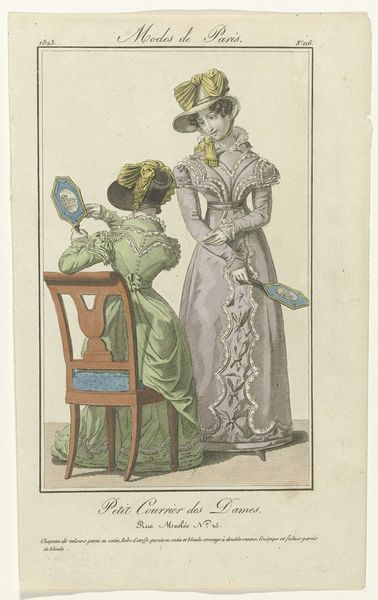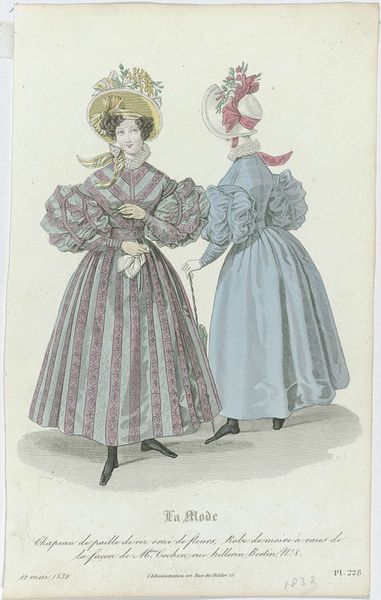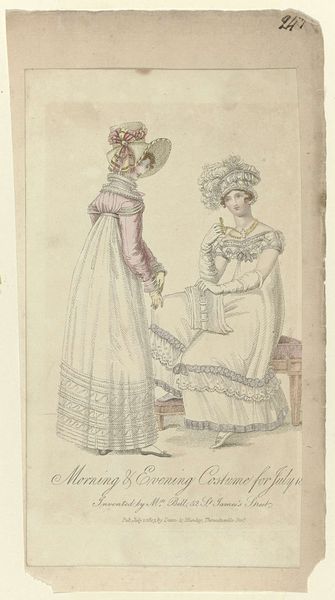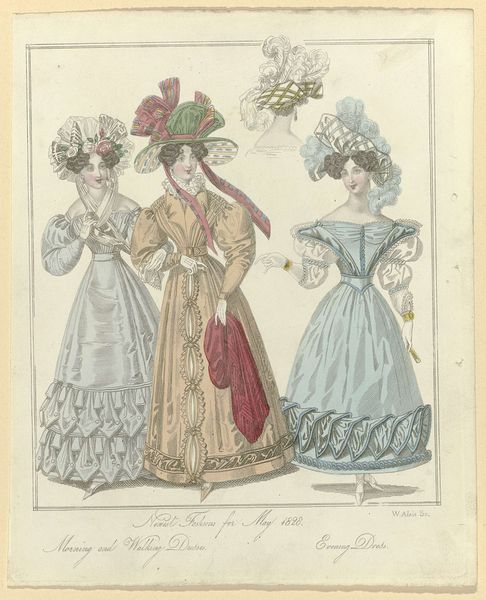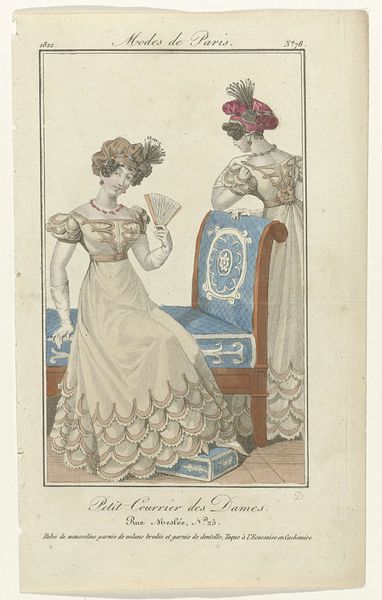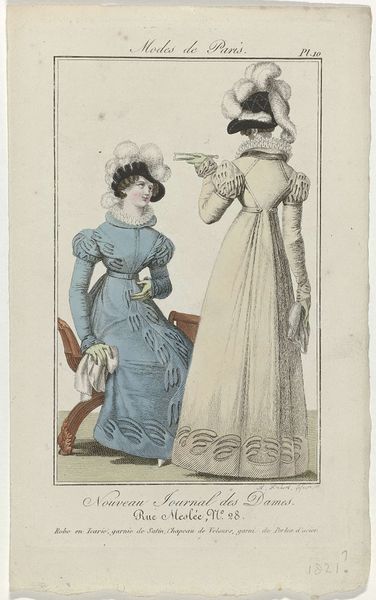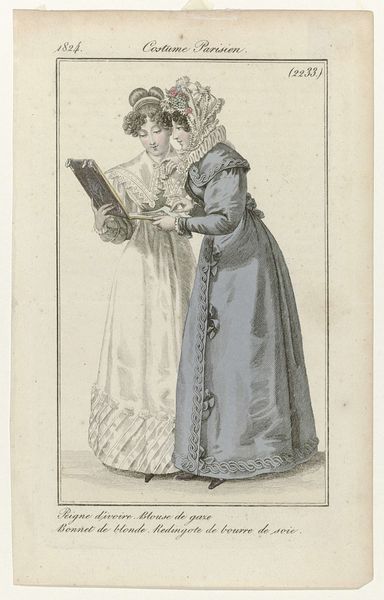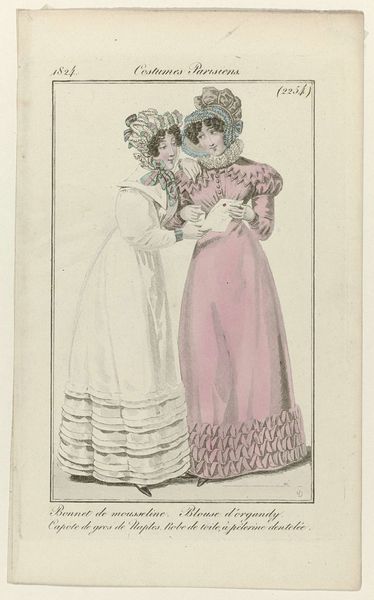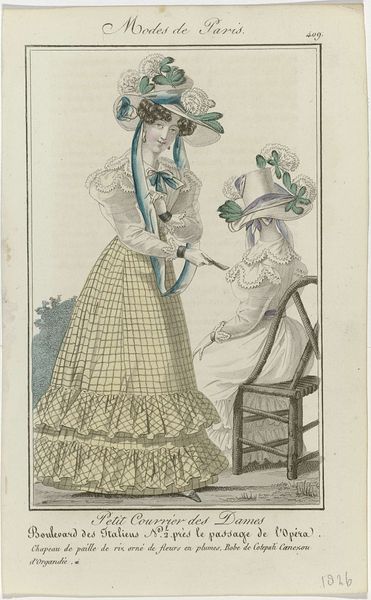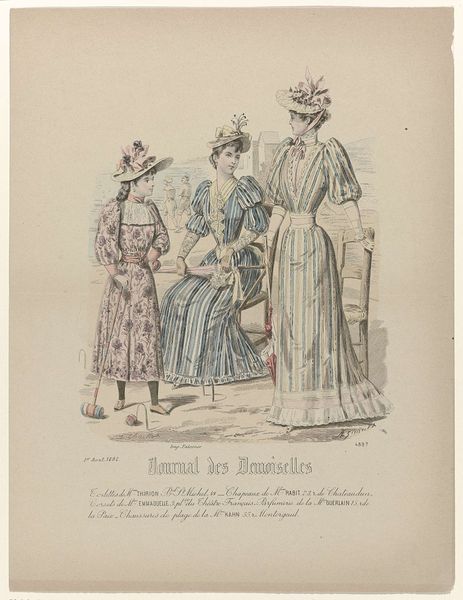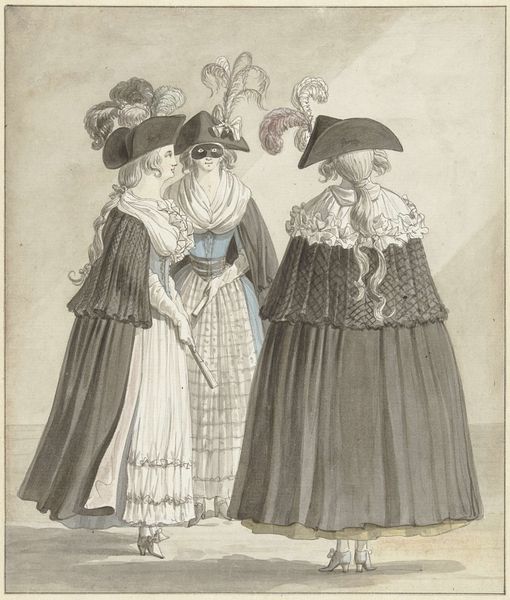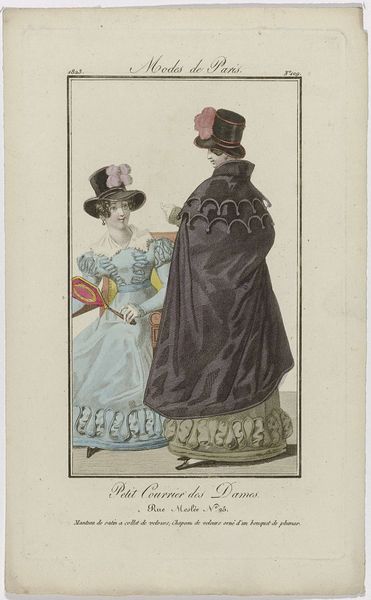
painting, print, watercolor
#
portrait
#
painting
# print
#
watercolor
#
romanticism
#
watercolour illustration
#
genre-painting
Dimensions: height 176 mm, width 109 mm
Copyright: Rijks Museum: Open Domain
August Delvaux made this fashion plate, featuring two women modeling the latest styles, in 1824. It’s a hand-colored engraving, a process that begins with an incised metal plate which is then printed, and finished with watercolor washes. Look closely, and you’ll see the real subject is textiles. The fabrics on display speak volumes about the burgeoning textile industry of the 19th century. We see variations in texture, from the soft drape of the shawls to the sheen of satin ribbons. Each of these materials represents a chain of labor, from the cultivation of raw materials like cotton and silk, to the complex weaving and finishing processes required to make them. These new materials, often produced in factories and shipped across empires, made this kind of fashion accessible to a growing middle class. Fashion plates like this one were more than just pretty pictures. They played a crucial role in shaping consumer desire, and in circulating the latest trends to a broad audience. They testify to the powerful and often unseen influence of materials and making on our everyday lives.
Comments
rijksmuseum about 2 years ago
⋮
After the turbulent years of the French Revolution, in 1797 a fashion magazine was finally published again: the Journal des Dames et des Modes. Under the direction of Pierre de La Mésangère, it developed a cosmopolitan flair. The very best draughtsmen were recruited to produce the fashion illustrations, called Costumes Parisiens. They visited spots all over Paris to ensure they saw the latest styles. These included high-waisted gowns with low necklines, ‘Greek’ slippers with cross-laces 1, genuine Kashmiri shawls 2, reticules 3 (small stylish handbags), poke bonnets 4 and full-length English coats knowns as redingotes 5.
Join the conversation
Join millions of artists and users on Artera today and experience the ultimate creative platform.
